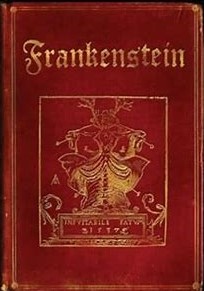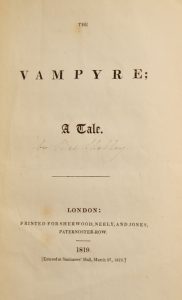- During the summer of 1816, the weather was wet and unpleasant in Europe, forcing writers Mary Shelley and John William Polidori to spend much of their time indoors. They and other writers, including Lord Byron, spent time near Lake Geneva in Switzerland. There, they wrote ghost stories and created famous works of horror fiction, including Shelley’s Frankenstein and Polidori’s The Vampyre.

Published by Lackington, Hughes, Harding, Mavor and Jones of Finsbury Square (1818)

Published by Sherwood, Neely and Jones (1819)
How is this related to climate?
- In 1815, Mount Tambora, a volcano in Indonesia, erupted in the largest volcanic explosion in recorded history. Sulfur dioxide and volcanic ash were thrown into the air, blocking out the sun and causing a volcanic winter. Average global temperatures dropped by 3°C.
- The Little Ice Age was also just coming to a close.
- The combination of these two events resulted in an extremely cold summer in 1816, which is often referred to as “The Year Without a Summer.” Europe experienced months of heavy rain and parts of the US were covered in snow during summer months.
Further Exploration
- Crop harvests the following year, 1817, were very poor and famine triggered many riots in Europe.
References and additional resources
- Andrews, E. “What Was the ‘Year Without a Summer’?” History. 2015. www.history.com/news/what-was-the-year-without-a-summer.
- Lanchester, J. “How the Little Ice Age Changed History.” The New Yorker. 2019. www.newyorker.com/magazine/2019/04/01/how-the-little-ice-age-changed-history.
- Prothero, D. R. and Dott, R. H. Evolution of the Earth (8th ed). New York, McGraw-Hill Education, 2010.
- University Corporation for Atmospheric Research. “Mount Tambora and the Year Without a Summer.” UCAR Center for Science Education. (n.d.). www.scied.ucar.edu/shortcontent/mount-tambora-and-year-without-summer.
